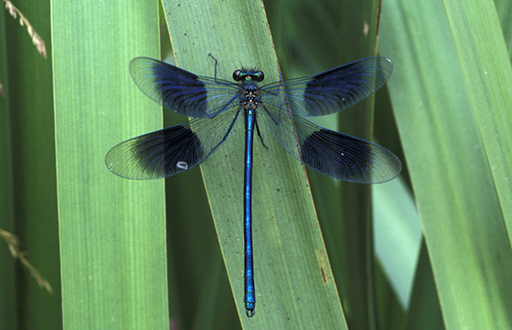6 Using a biological key
Now it’s your chance to practise using a biological key for identifying species of dragonfly or damselfly.
Activity 1 Working through a dichotomous key
In this activity you will need to choose three of the seven dragonfly or damselfly photos shown below and then use the dichotomous key [Tip: hold Ctrl and click a link to open it in a new tab. (Hide tip)] to produce an identification. For each photo you select, record the name of the species that you arrive at using the key.
Then, with the same photos selected, work your way through the iSpot online Bayesian key. Again, note down the name of the species.
Did you arrive at the same species name using both forms of the key? If not, check all the characters of the species to make sure you are confident which species it is and see if you can find where you made a mistake in the key.
Answer
The species are : Figure 3 (Option 1)Brachytron pratense, Figure 4 (Option 2) Calopteryx splendens, Figure 5 (Option 3) Coenagrion puella, Figure 6 (Option 4) Pyrrhosoma nymphula, Figure 7 (Option 5) Ischnura elegans, Figure 8 (Option 6) Cordulia aenea, Figure 9 (Option 7)Libellula depressa.

Now look at Figure 10 of a banded demoiselle. What is the main difficulty you might have when identifying the species in this image?
Answer
The insect has its wings open at rest, but this species is classed as a damselfly in the keys and damselflies are supposed to have their wings closed at rest.
